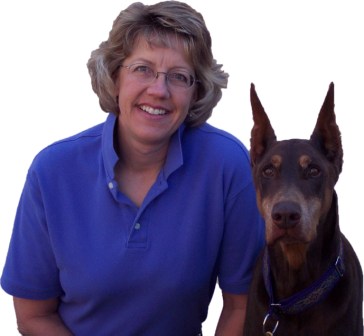
The nose knows
A dog’s sense of smell is at least 200 times stronger than a human’s. Is it any wonder that they give us the once-over when we arrive home? Like private detectives, their noses tell them where we’ve been and who we’ve seen. Law enforcement has long taken advantage of a dog’s keen sense of smell by training dogs to find produce, drugs, explosives, and even bodies. Today doctors are using dogs to help detect cancer cells and alert diabetics to dropping blood sugar. These jobs require some special talent and training, but most pet dogs excel at finding food with little or no training.
You can put your dog’s sense of smell to work by teaching the “Find it” game. Put your dog in a bathroom or crate where he can’t see you. Then get several pieces of a treat with a strong smell; small cubes of cheese work well. Place the treats around the room at floor level, but not out in the middle. Dogs don’t distinguish color well, so don’t worry about concealing them — you want the first game to be easy.
Bring your dog to the doorway, and cheefully tell her to “find it” and let her start searching. Brightly praise each successful find. Be patient, but if she is really struggling, walk near the missing treat to encourage her to locate it. Make the game easier next time.
If your dog is having fun and succeeding, you can make the game a little harder by:
• Making the treats smaller or less smelly
• Hiding the treats more — behind a door or on the rung of a chair
• Spreading the treats over a wider area, from two rooms to the whole house
• Using more treats to prolong the search
For outdoor fun, you can scatter treats on an untreated lawn, or divide the dog’s meal into several small bowls (or Kong toys) and hide them around the yard. Don’t try to trick your dog by making the game too hard or playing for too long. Don’t hide treats above nose height. Keep it fun and leave him wanting more.
If you find your dog really excels at this game, you may want to seek out a “Fun Nosework for Dogs” class. At home, try this: Gather several containers for food, choose one as the “bait drop” and mark it. You will only ever put food in that container. This means he has to use his nose and not rely upon what the container looks like. Spread the containers on the floor with a treat in the “bait drop,” then ask your dog to “find it.” As he gets better at this game, you can spread the containers farther apart and use less smelly food. This is a great way to play the “find it” game without overfeeding a dog that is chubby.
If your dog is nervous, reactive, or distracted in certain situations, a quick game of “find it” can get you out of trouble. To diffuse her stress and move her safely away from a trouble spot, cue “find it” and toss treats ahead of you as you make your way back to safety. This keeps the dog’s head down, focused on something pleasant, and allows you to move away from the problem.
The “find it” game is sure to become a fast favorite with your dog (and you). It is suitable for young and old dogs alike and provides mental stimulation without being physically taxing. It provides indoor exercise when you can’t or don’t want to walk. It can help a high-energy dog gain focus, and build confidence in a shy dog. And it allows them to use their natural talents in a fun, acceptable way.
Cricket Mara operates a dog behavior consulting practice in Corrales called Pawsitive Dog (www.pawsitivedog.com). Send comments and questions to cricket@pawsitivedog.com.
